MEKNES (Day 2)
We walked to the medina, the old town center. We marveled at the enormous decorated Bab el-Mansour, the old city gate, then went across the street to an underground souk (market). One could buy everything edible (or even non-edible depending on your point of view) here. There were dozens of different types of olives all stacked by hand in giant mounds; spices of all colors; enormous bundles of mint destined for the tea; live bunnies and chickens that docilely sat on weighing scales as their fate was determined; giant chunks of sheep carcass; and even slabs of tongue with some teeth still attached to the chunks of lower jaw. Every few steps, a new smell wafted by... ranging from incredibly good to incredibly bad.
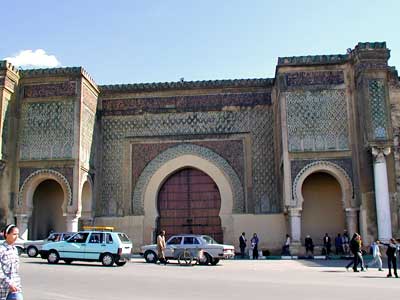
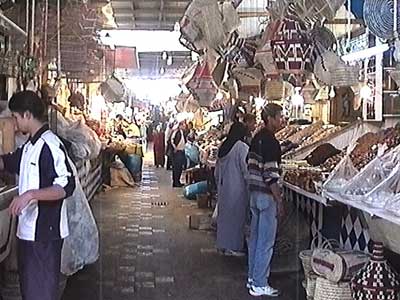
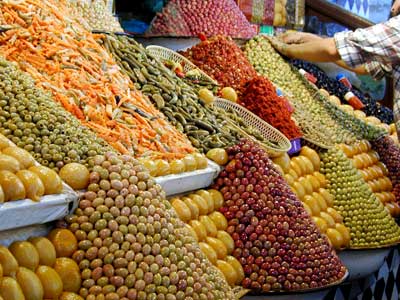
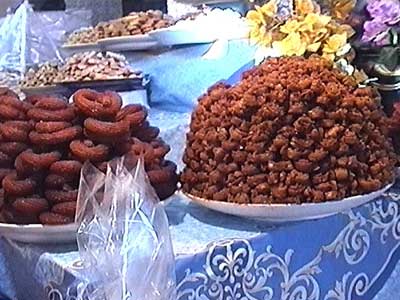
We then moved on the the rest of the souks, some indoor, some outdoor. They were conveniently divided into different sections such as ceramic, jewelry, clothing, carpet, etc. One store was located in a former medersa (a school where students studied the Qur'an). The enormous ceilings and pillars were carved and decorated, and carpets lay stacked and hanging from every corner. The sales guy immediately began covering the floor in front of us with carpet after carpet after carpet after carpet! All sizes, patterns and colors. Then the haggling began. The price on one we liked was 2,500 dirham (about US$ 250), buuuuuut since it was still morning and we had come without a guide (who always required a commission), he was going to let us have the carpet for a mere 1,100. After much debate, much time, and much mint tea, we finally left paying him only 650 dirhams, which we later learned was a very good price.
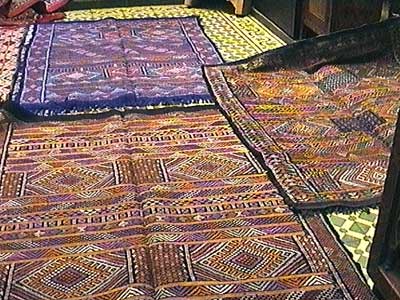
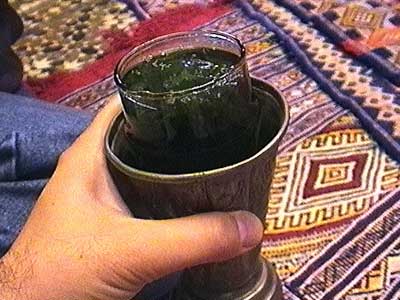
In the instrument market we were approached by a man on a bike who insisted that we had to visit his workroom several blocks away. We ended up hiking up a muddy dirt road bustling with locals until we arrived at a small dark shed in some back alley. We were hesitant about the whole situation based on our previous Casablanca experience, but all went well and we ended up purchasing some small ceramic drums (tebilat) from him at a fair price.
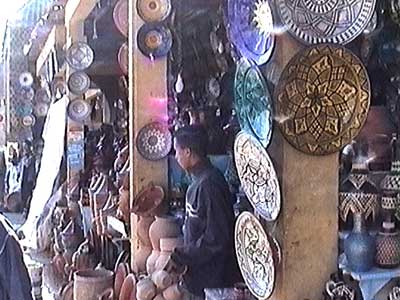

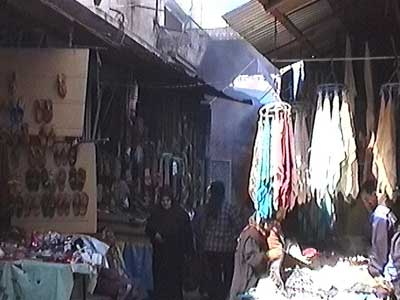
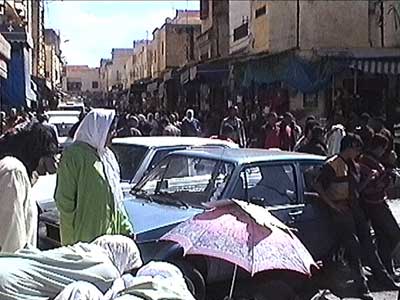
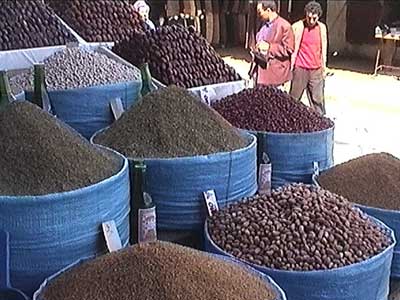
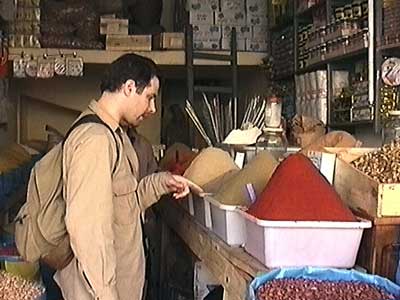
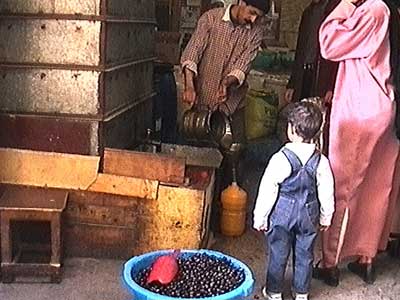
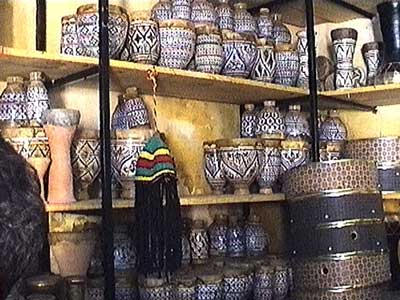
Life shuts down in Morocco from about 11:45 to 3 pm, so we passed the time by having some lunch in the main market square. Once things opened up again, we passed through the monumental Bab el-Mansour gate and entered Moulay Ismail's 17th century Imperial City, the old palace section of the city. Moulay Ismail, the second sultan of the Alawite dynasty (which still rules today), marked his ascent to power at the age of 25 in 1672 by sending the heads of 10,000 slain enemies to adorn the walls of the imperial capital cities of Fes and Marrakesh.
Our first stop was Moulay Ismail's mausoleum. We walked through several tall, simple, roofless rooms until we arrived at a small courtyard. Here we had to remove our shoes. Our journey continued on course woven mats which led over intricate mosaic floors into the mausoleum itself. The room was relatively small but very tall and airy. Intricately carved arches and pillars wound their way up and were dappled with filtered light from windows near the top. Large golden doors lined the walls. While we as non-muslims were not allowed to enter the actual tomb itself, we could gaze upon it in the next room. Four small white short coffin-like gravestones sat central in a room even more ornately decorated.
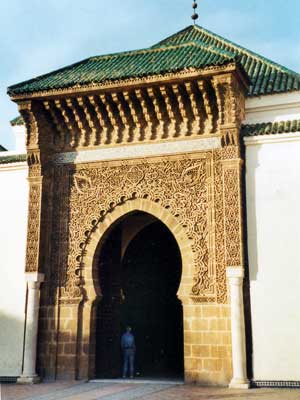
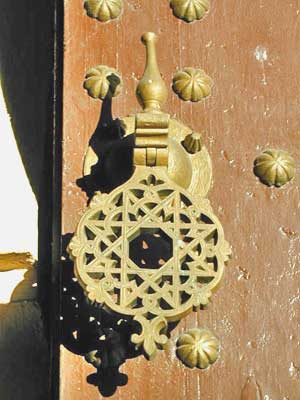

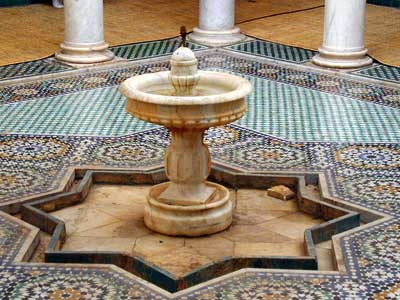
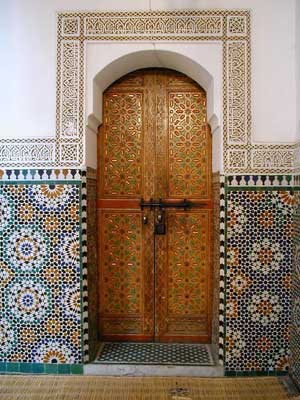
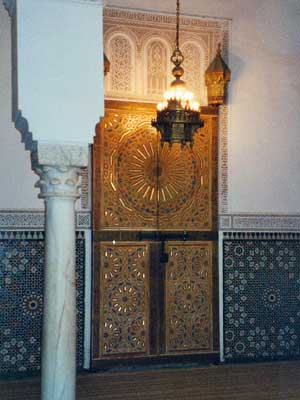
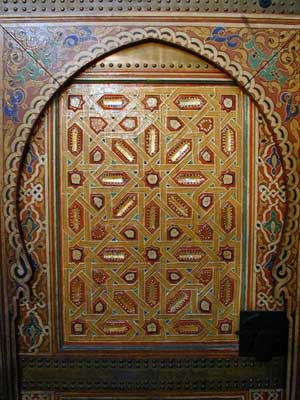
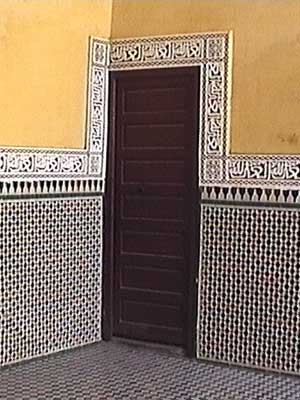
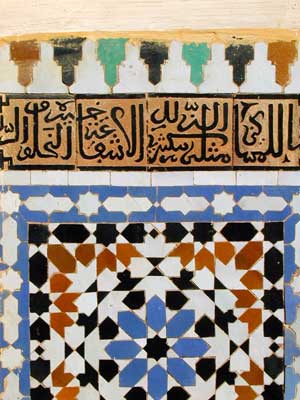
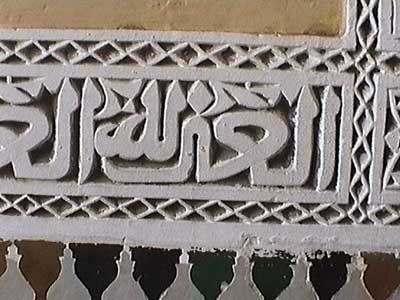
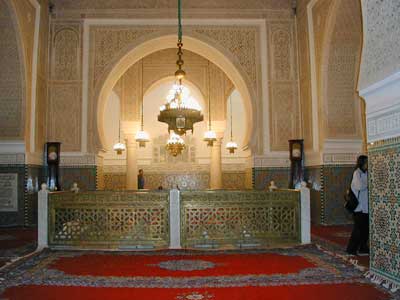

We left the mausoleum and passed through several city gates until eventually, after a very long walk, we arrived at the Heri es-Souani granaries and vaults. It was cool and dark inside. The pounded dirt floor and tall walls were illuminated only by sparse yellow lamps and faint daylight that seeped in through occasional holes in the ceiling. We wandered through the massive empty halls until we found ourselves outside again at the former stables. They were currently in a state of ruin and quite overgrown (although the first 3 or so rows had been cleaned up and restored), but this seemingly endless hallway with rows on both sides used house 12,000 horses.



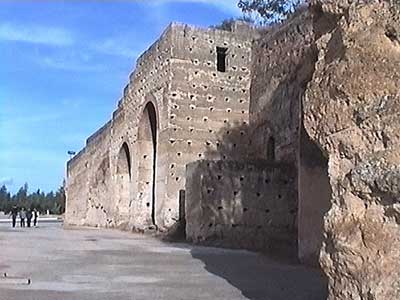
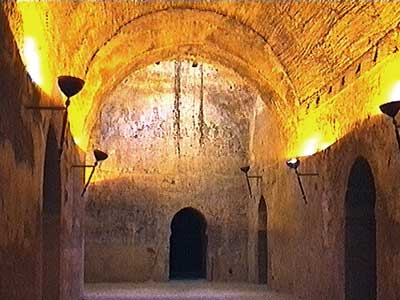

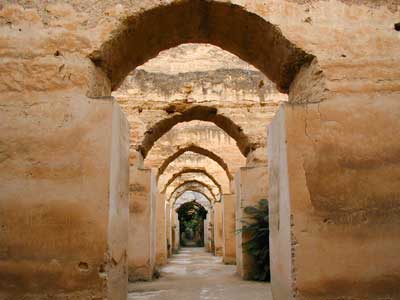
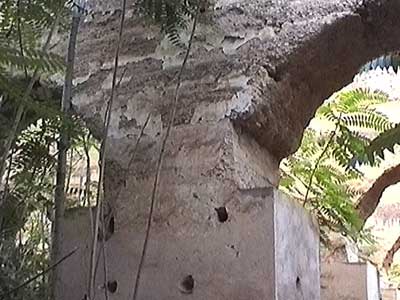
We headed back to the hotel, passing many beautiful doors, gates and buildings.
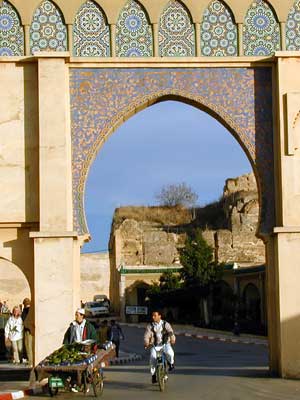

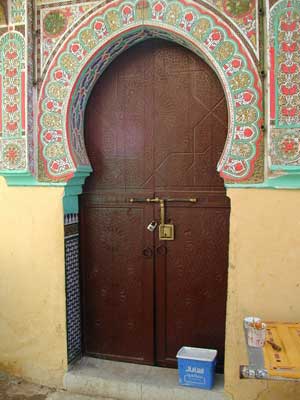
return • continue

